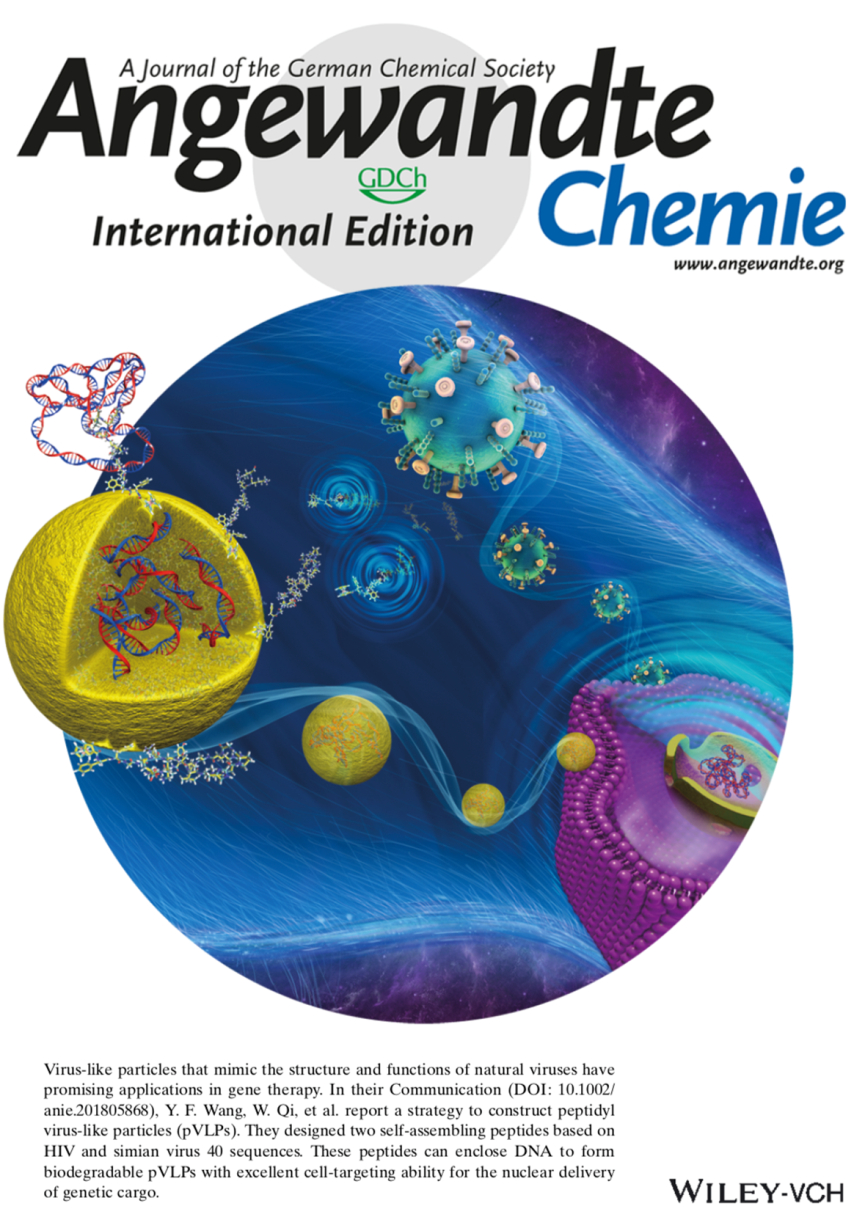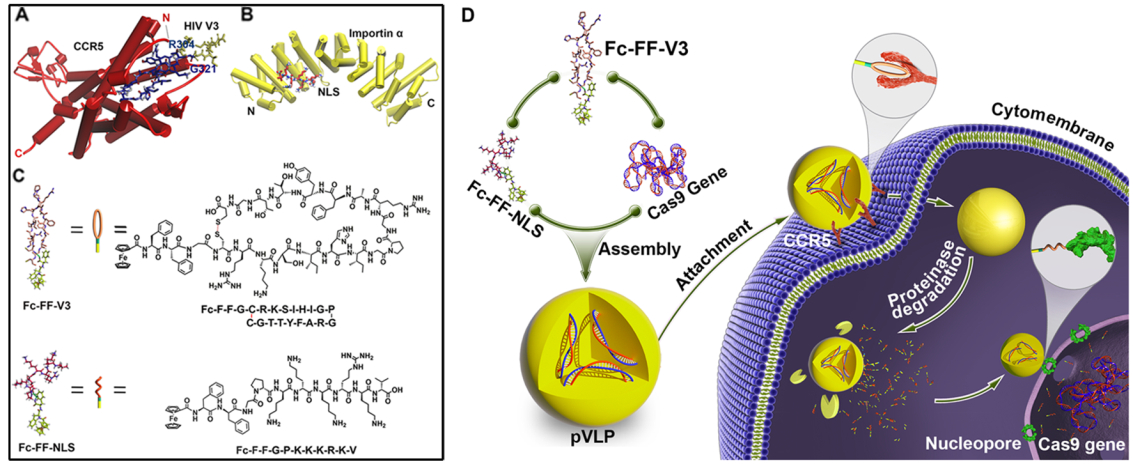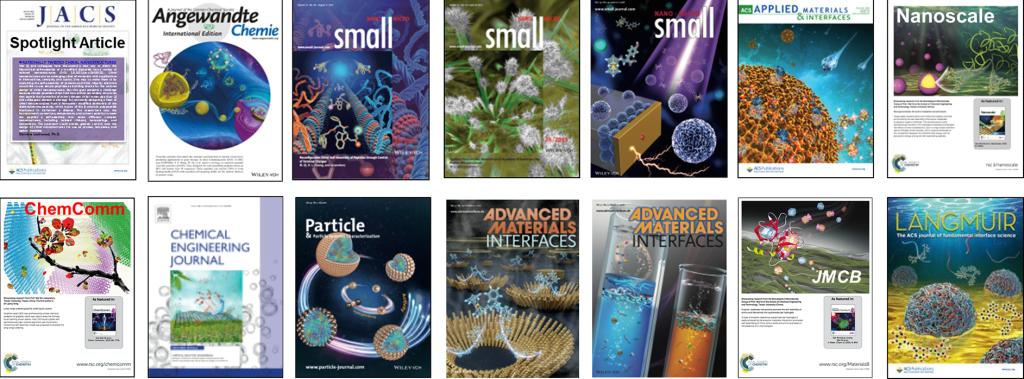
Using the targeting properties of natural viruses, non-pathogenic virus-like nanoparticles can be synthesized for the targeted delivery of gene cargoes. This work by Professor Wei Qi and his team members was published online in the internationally renowned academic journal Angewandte Chemie-International Edition and the article was selected as the Inside Cover.
Virus can be regarded as nanoparticles co-assembled by nucleic acids and proteins. Due to the unique structure of envelope protein, viruses can bind to the receptors of host cell, achieving infection of specific cells and delivering genetic cargo across the membrane barriers. Inspired by this, non-pathogenic and specifically targeted nanoparticle with the ability to enclose genetic cargos, can be obtained by mimicking viral functional proteins.

Professor Wei Qi and his team members designed two viral peptides with cell/nucleus targeting capabilities by mimicking the human immunodeficiency virus (HIV) third loop (V3) peptide and simian virus 40 (SV40) large T antigen protein nuclear localization sequences (NLS). The two peptides could co-assemble into peptidyl viral-like nanoparticles (pVLPs) which could enclose the genetic cargo with excellent cell targeting ability. The pVLPs can serve as ‘Trojan Horse’ to penetrate the cellular membrane and deliver the genetic cargos into the nucleus through the viral entry route. The results provide a promising pathway for the targeted gene therapy for virus-related diseases. The paper entitled "Rationally Designed Peptidyl Virus-Like Particles Enable Targeted Delivery of Genetic Cargoes", can be found at https://onlinelibrary.wiley.com/doi/abs/10.1002/anie.201805868. The first author of this paper is Kong Jia, a Ph.D. student in the Lab of Enzyme Engineering and Technology, School of Chemical Engineering and Technology in Tianjin University. Dr. Yuefei Wang and Professor Wei Qi are the co-corresponding authors.

In recent years, inspired by biology, Professor Wei Qi and his team members constructed a series of peptide self-assembling systems by designing peptide sequence or introducing functional groups. With the concepts originated from chemical engineering and interface physics, they intensified the self-assembly process to achieve the precise and controllable preparations of various peptide-based nanostructures, including stimuli responsive or chiral peptide nanomaterials. By simulating the active site of natural enzyme and the functional protein structure of virus, they obtained peptides nanostructures with biocatalytic activity for chemical conversion or the ability for targeted delivery of drugs. The relevant works have been published in high-level publications in the fields of chemistry, chemical engineering, and material science, such as JACS (Spotlight Article) and Angewandte Chemie (Inside Cover). Nearly 20 articles have been selected as highlights, covers or highly cited papers.
By: Wang Xiaona, Sun Xiaofang
Editors: Ross Colquhoun, Tao Weijing, Wang Yuefei






